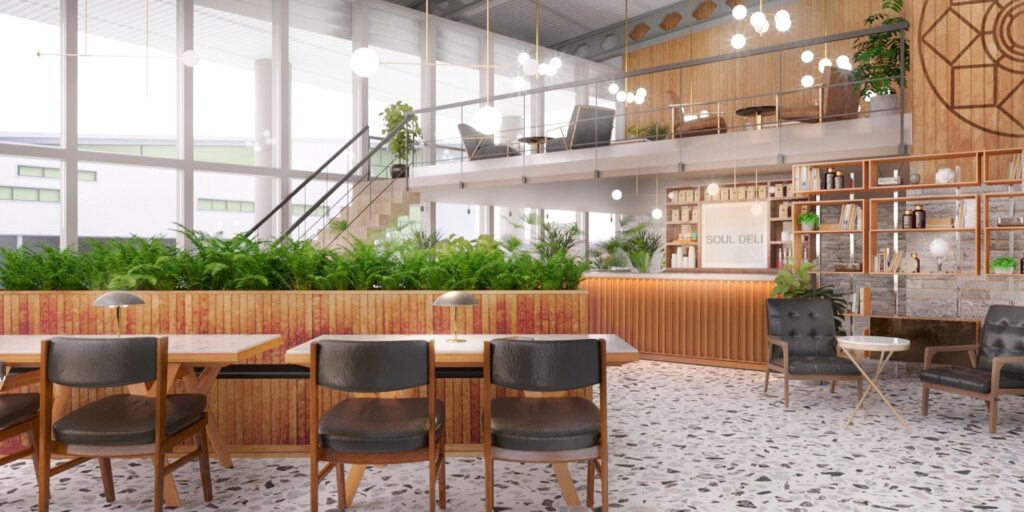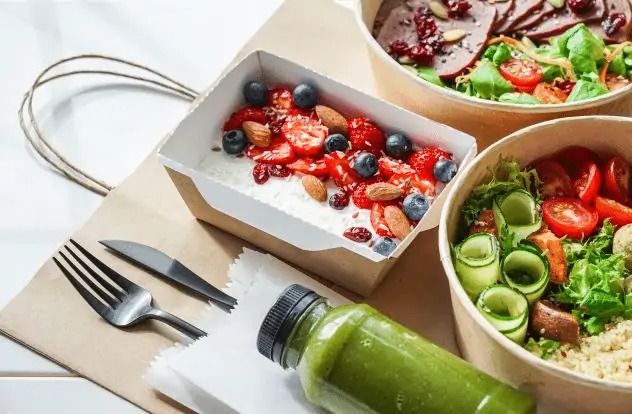Key Highlights
- Café success depends on efficient back-of-house layout, not just front-of-house style.
- Flow determines how well staff communicate and how fast service runs.
- Smart cafe kitchen design shapes both operations and customer experience.
- Avoid common pitfalls like poor storage, overcrowded stations, and ignoring staff input.
- Designing for flexibility helps cafés grow without costly redesigns.
The Hidden Engine Behind Every Café
When you walk into a café, what catches your attention first is usually the atmosphere. The smell of coffee, the hum of conversation, the warm lighting, and the aesthetic details all make an impression. But behind every perfect latte and seamless service is a space most customers never see: the kitchen.
A café’s success depends far more on what happens behind the counter than what hangs on the walls. The kitchen is the engine that drives everything, from the speed of service to the quality of the menu. It’s where timing, coordination, and preparation come together, often under pressure, to create a smooth experience for customers.
Yet, too often, kitchen design comes as an afterthought, squeezed into whatever space remains after the front-of-house has been styled. The result is a layout that looks beautiful but operates inefficiently. Staff move in circles, equipment crowds walkways, and service slows down during the very times it should be at its best.
Cafés that last tend to be built the other way around. They start by thinking about how the team works, how food moves through the space, and how each piece of equipment supports that process. Only then does the rest of the design take shape. The most successful cafés are designed from the inside out, because great service begins long before the first customer walks through the door.
Flow Determines Function
Every café has its own rhythm, but the one thing they all rely on is flow. The way ingredients, staff, and finished dishes move through a space determines how efficiently a café operates. When that movement is smooth, service feels effortless. When it’s not, even the smallest task becomes a frustration.
Flow starts with mapping the journey from storage to preparation to service. Ingredients should move forward, not back and forth. Cooked food should reach the pass without staff colliding or crossing paths. The same logic applies to the barista area, where milk, beans, and cups should sit within easy reach.
Poor flow can cause more damage than most owners realise. Bottlenecks at the espresso machine, long walks between prep areas, or a fridge placed too far from the line can all slow things down. Over time, inefficiency leads to fatigue, lower morale, and lost revenue.
A good layout, on the other hand, almost disappears. Staff move naturally, communication is easier, and mistakes drop away. When the kitchen is designed around movement rather than decoration, the result is consistency, calm, and speed.
Designing for Daily Rhythm
The best café layouts are built for rhythm, not just routine. A space that works well during a quiet weekday morning might struggle during the Saturday brunch rush if it hasn’t been designed with flexibility in mind.
A well-planned kitchen anticipates how staff move during peak hours, how prep and plating are divided, and where overflow storage is needed. Every square metre has a purpose. Smooth service depends on designing for these natural cycles — the surges, the slowdowns, and the hours when everything has to happen at once.
Good designers work closely with chefs and baristas to understand these patterns. They observe how orders flow, where queues form, and where movement overlaps. It’s not about guessing what will work but building a system that supports how the team actually operates.
The Core of Smart Café Design
At the centre of any successful layout is a thoughtful approach to cafe kitchen design. The kitchen should define the café’s footprint, not simply fit within it. By planning the kitchen first, owners and designers can ensure that power, plumbing, and ventilation are positioned correctly from the start.
The layout also influences what kind of menu can be delivered efficiently. A café focused on quick, fresh service will have a very different setup from one that plates cooked meals. Barista stations, fridges, and pass-throughs all shape how the café feels to the customer, even if they never step behind the counter.
When the back of house and front of house are aligned, customers experience a space that feels organised and balanced. That connection between efficiency and experience is where good design truly shows.
Balancing Beauty and Utility
It’s tempting to focus on surface details — tiles, colours, and furniture — but in hospitality, function always comes first. The most beautiful spaces are often the ones that work best because every element has a purpose.
Open kitchens and visible barista stations have made the operational side of cafés part of the atmosphere itself. Customers like to see food being prepared, and staff feel more connected to the people they serve. This transparency only works when the workflow supports it, allowing movement to appear natural and efficient.
Design and operations are not opposites. When they inform each other, the result is a space that feels both beautiful and effortless.
Mistakes That Cost Time and Revenue
One of the most common design mistakes is planning around appearance rather than performance. A counter might look impressive on paper but create bottlenecks once service begins. Equipment might be placed for symmetry rather than convenience. These small inefficiencies, repeated hundreds of times a day, add up quickly.
Another common issue is overlooking staff insight. The people who work in the space daily know where the problems are — awkward corners, blind spots, or stations that feel cramped. Ignoring their feedback often leads to rework and frustration later on.
Smart café owners test their layouts before finalising them. Mock service runs, clear zoning, and consulting with experienced chefs or hospitality designers can reveal potential issues early. The goal is to build a space that works as hard as the people in it.
Designing for Growth
No café stays the same forever. Menus evolve, customer bases grow, and teams expand. A well-planned kitchen should be able to adapt. That means choosing equipment that can scale, leaving space for additional prep areas, and designing stations that can serve multiple purposes.
Thinking ahead also helps when opening new locations. Once a café has a working system, that model can be replicated with ease. Consistency in design ensures consistency in experience, both for customers and staff.
A flexible layout is an investment in the café’s future. The more adaptable the space, the less disruptive growth will be.
Inside-Out Design Creates the Best Experiences
The kitchen might not be what customers come to see, but it’s what shapes everything they feel. From the pace of service to the warmth of interaction, the layout behind the counter influences every moment.
When design starts from the inside out, every element — from workflow to lighting — supports the same goal: creating an environment that feels effortless. The best cafés are not defined by their look alone but by the invisible systems that keep them running smoothly.
In the end, great design is not about decoration. It’s about how people move, how they connect, and how a simple idea — a good cup of coffee — becomes an experience worth coming back for.



